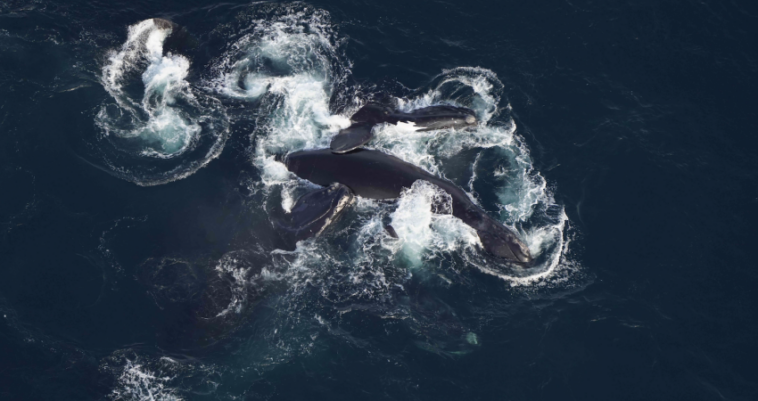Experts don’t like what they sea here.
High numbers of an endangered whale population have been detected in a potentially dangerous, high-traffic boating zone south of Long Island, according to experts from the New England Aquarium
More than 82 — including 56 in one day — of the nearly 360 remaining, critically endangered North Atlantic right whales were spotted in the treacherous water highway at the end of July and into August in an area spanning between 40 and 70 miles south of LI.
Of concern is that no mandatory speed restrictions currently exist to reduce the risk of fatal boat strikes to large whales in the area.
Some were observed with propeller wounds from boating strikes, a leading cause of the species’ mortality along with entanglement from fishing nets.
“This multi-month grouping of whales south of Long Island is very unusual,” said researcher Katherine McKenna of the aquarium’s Anderson Cabot Center for Ocean Life. She added that this “mid-Atlantic aggregation” of the whale is associated with changing ocean conditions.
Fishermen and other nautical experts have also observed other behavioral changes in sharks from prey fish migrations, leading them closer to local beaches — some on Long Island’s north shore.
Like sharks, experts believe the right whales have moved into their new stomping grounds — called the Hudson and Block Canyons, the former stemming from a Hudson River outlet — because of abundant food sources.
The aquarium experts say the two telltale signs of feeding are that whales spend at least 10 minutes below the surface and defecate in the region.
“That indicates there’s been good prey, a good food resource for them to stick around there for that long,” McKenna told WBZ-TV, recalling that fishing nets and boats were abundant around the marine mammals.
“We were definitely nervous seeing that,” she said, adding that their next congregation area is “becoming more unpredictable” due to changing ocean conditions.
Some experts, including those with the National Oceanic and Atmospheric Administration (NOAA), are also proposing changes in boat speed rules to help protect the local population and other whale species swimming in the area.






